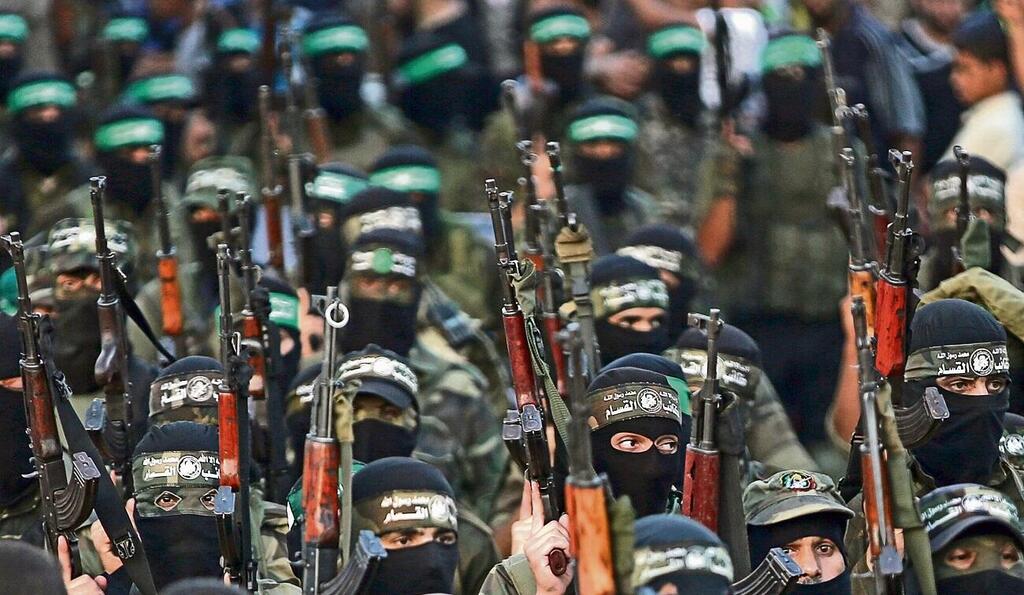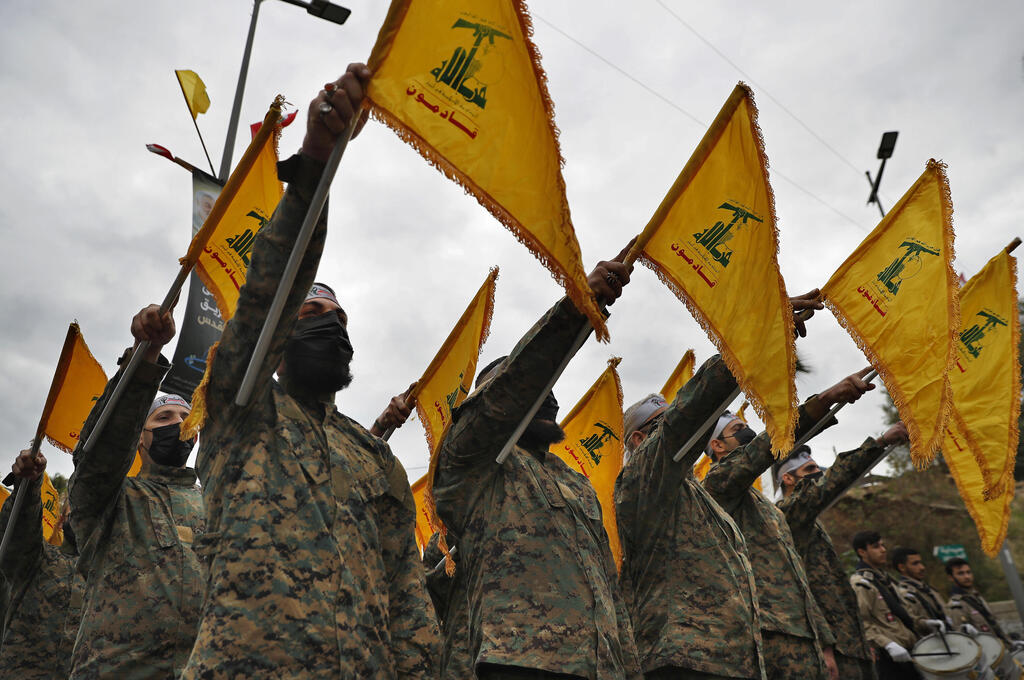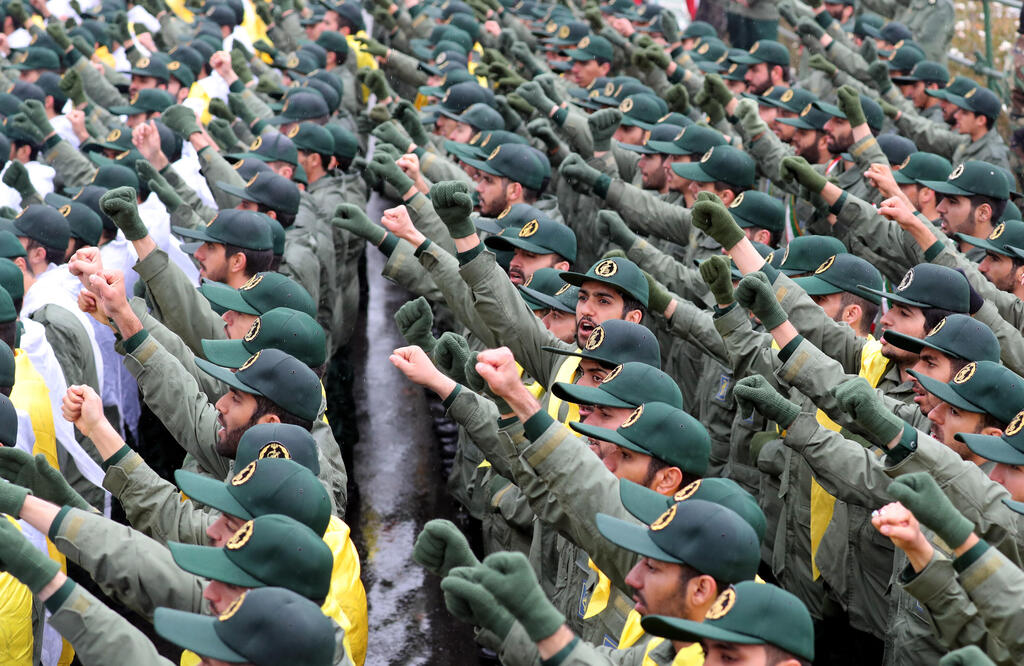The fierce fighting during the May 2021 war fought between Hamas in Gaza and Israel was led in Gaza by a joint security room that included intelligence officers from the Izz al-Din al-Qassam Brigades – the military wing of Hamas, the Lebanese Hezbollah and Iran’s Islamic Revolutionary Guard Corps.
High-ranking Hamas commander Muhammad Sinwar, the brother of Hamas leader in Gaza Yahya Sinwar, in his first-ever media appearance on the Al Jazeera investigative program “What is Hidden is Greater” made the revelation the cooperation between Hamas and the “Axis of Resistance” composed of Iran, Syria, and Hezbollah.
Ibrahim al-Madhoun, the director of the Turkey-based Association for Palestine Communicators and Media (FIMED), believes that the level of coordination and communication among the parties in the Axis of Resistance, “especially between Hamas and Hezbollah, is increasingly growing.”
“Obviously, the joint operations room is in continuous session where there is direct communication and joint arrangement toward reinforcing fighters’ capability and supply mechanisms, in addition to sharing experiences and information in order to advance a comprehensive plan to confront any Israeli aggression, whether on Gaza or on Lebanon,” Madhoun said.
Naim Qassem, the deputy secretary-general of Hezbollah, confirmed in an interview with Al-Aqsa TV in April that cooperation between Hamas and the Axis of Resistance is ongoing and “includes training, arming and transferring expertise.”
This cooperation is not limited to financial and military aid, but also includes intelligence support, Ibrahim Habib, professor of strategic and regional studies at Al-Awda University College in Gaza, said.
“The Palestinian resistance factions benefit greatly from the joint security room at the intelligence level. It has become easier for the Palestinian resistance to conduct sensitive hacking operations knowing that the information it receives from Iran is reliable, as the latter owns a satellite that has several functions, including intelligence gathering and espionage,” he explained.
The Palestinian resistance factions “realize that it is not wise to disperse operational orders in case of military confrontations. Rather, it is better to focus on the goal and ensure an integrated flow of work. Therefore, all Palestinian factions, including Islamic Jihad, are part of the joint operations room,” Habib said.
He expects that, in the next stage, “we may witness joint cooperation on several fronts between the three parties [Hamas, Iran, Hezbollah] and perhaps more if other players join the alliance.”
Obviously, Israel is fully aware of the seriousness of this and is preparing for such scenarios, Habib noted.
Three weeks ago, the Israel Defense Forces began “Chariots of Fire,” its largest training exercise in decades. The four-week drill simulates a multifront and multidimensional war against Israel’s enemies in the air, at sea, on land and on the cyber front.
Sources on the ground say the Axis of Resistance alliance may become the most important factor on the political scene.
Ibrahim Ibrash, professor of political science at Azhar University and a former culture minister, believes that the reports of the Axis’ strength and power are inflated.
“There is a great exaggeration, made by media outlets such as Al Jazeera, in estimating the Axis of Resistance’s support of the Palestinian factions and of their capacities as well,” he said.
“If it’s true [the claims of strength], then why didn’t the parties to the Axis of Resistance defend themselves when they were targeted by Israel many times?” Ibrash asked.
“The real question here is, when all red lines have been crossed, when will this Axis of Resistance react? Israel assassinated senior top officials in Iran, Syria and Lebanon, yet no response has been made. Israel is occupying the entire Palestinian land, declared Jerusalem its capital; Israeli settlers are constantly storming Al-Aqsa Mosque, illegal Israeli settlement, oppression and demolition of Palestinian homes continue until this very moment. When will they act? What are they waiting for?” he said.
According to Ibrash, Palestinians, mainly the Jerusalemites, are the ones actually defending Palestine and Jerusalem, and not the Axis of Resistance.
Ibrahim al-Madhoun, the director of the Turkey-based Association for Palestine Communicators and Media (FIMED), believes that the level of coordination and communication among the parties in the Axis of Resistance, “especially between Hamas and Hezbollah, is increasingly growing.”




